
As an IT professional, you’ve undoubtedly come across, and perhaps even taken part in, beta testing.
However, can you say the same for alpha testing? Have you considered its advantages?
This type of software testing is as pivotal as its better-known counterpart, and it’s about time we shed some light on it.
Therefore, in this article, we’ll clarify what alpha testing entails, explain why it holds significant value, and reveal some pointers on how to execute it for the most favorable outcomes.
Stay tuned!
Table of Contents
What is alpha testing
Alpha testing is a crucial stage in the software release life cycle, where a software product is tested in-house before it reaches beta testers or a wider audience.
In fact, this stage marks the first real assessment of the product from a user’s perspective, which is why it’s classified as a component of acceptance testing, alongside beta testing.
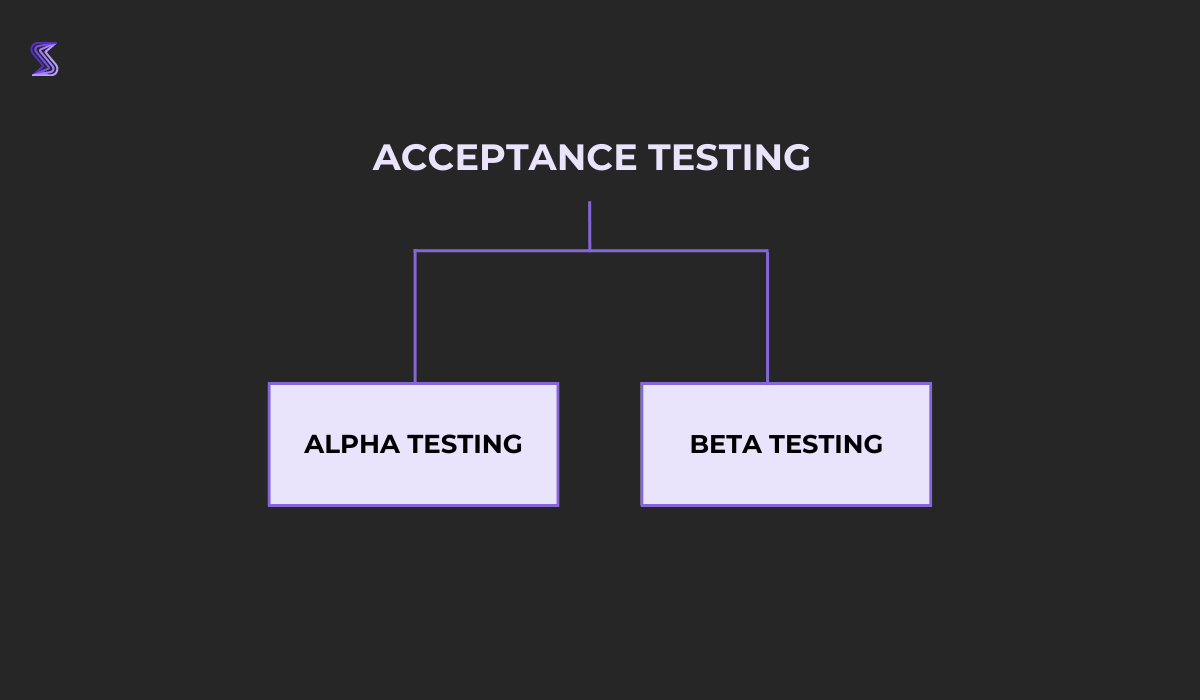
The primary objective of alpha testing is to identify and resolve bugs or any other defects in the software that the developers might have overlooked in their earlier efforts and to prepare it for beta testing.
You might be wondering at this point what distinguishes alpha testing from beta testing, considering that both are integral to acceptance testing and involve testing the software from the point of view of actual users.

Get unreal data to fix real issues in your app & web.
Essentially, alpha testing is conducted within a controlled simulated environment that imitates real-world scenarios, and employees within the company perform the testing.
Conversely, beta testing involves external end users who test the software in a real-world environment, and they are encouraged to use the product as they would normally use it.
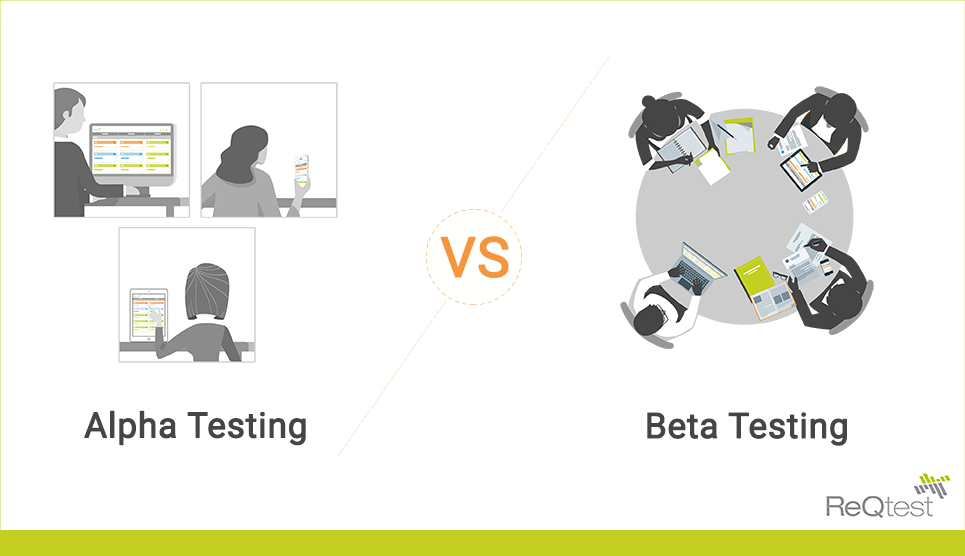
In other words, during alpha testing, internal team members use the product as if they were external users, testing the product’s functionality, performance, and usability.
Two testing techniques are employed for this purpose―white boxing, which tests the product’s internal workings, such as the code or database, and black box testing, which tests the software from the user’s perspective, with no knowledge of the code structure necessary.
Combined, they enable in-depth testing of the product.
After concluding alpha testing, the development team examines and resolves all identified issues before routing the product to beta testing.
Then a larger group of external beta testers will scrutinize the product again before its market launch.
Why do you need alpha testing
As we’ve previously noted, one of the most crucial objectives of alpha testing is to get the software ready for the beta testing stage.
Unfortunately, many teams tend to bypass this essential step and leapfrog directly to beta testing, disregarding the numerous benefits that alpha testing brings to the table.
For instance, imagine a scenario where your product isn’t subjected to internal team testing but is sent straight to beta testing.
It’s easy to comprehend the consequences of such activity.
The product would be sent back to the developers for refinement more frequently than usual, and this back-and-forth process could cause missed deadlines, project obstructions, and the unnecessary spending of resources.
Therefore, let’s list a few of the most critical advantages of alpha testing that will undoubtedly persuade you to avoid skipping this stage.
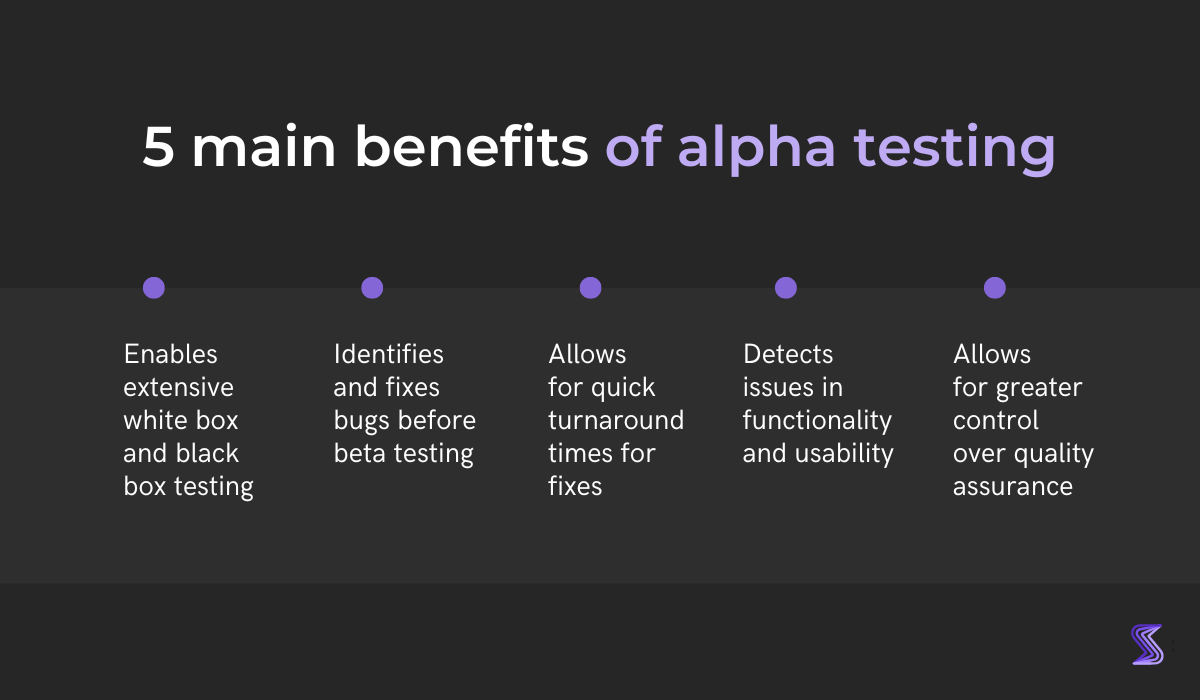
First, alpha testing facilitates in-depth testing.
Given that it employs both white box and black box testing, it makes it possible to test the software’s internal structure as well as its functionality and usability.
During beta testing, however, only black box testing is utilized.
Next, alpha testing reduces the need for future bug fixes.
Considering that it’s conducted in-house, alpha testing enables the identification of bugs and other defects that have gone undetected in previous testing.
This allows for immediate fixing by developers and reduces the number of revisions in beta testing.
Also, it offers a host of insights about usability and reliability.
As it is performed by real users, alpha testing provides useful insights into the usability and reliability issues that can be resolved before the beta testing.
Additionally, it enables better control over quality assurance―as the testers are on-site, they can be more responsive to changes or additions made by developers.
Given all these advantages of alpha testing, it’s no wonder that it has become a staple in the testing process.
When is alpha testing done
Over the course of the software development life cycle, each product goes through several stages of testing.
During coding, developers analyze each unit of code as part of the unit testing stage.
The product then progresses to the integration stage, where it’s examined how different modules amalgamate and work together, fixing any errors found in the process.
Upon integration, the entire system undergoes comprehensive system testing to determine its reliability and efficiency as a whole.
Afterward, as you can see in the picture, acceptance testing follows, comprising both alpha and beta testing.
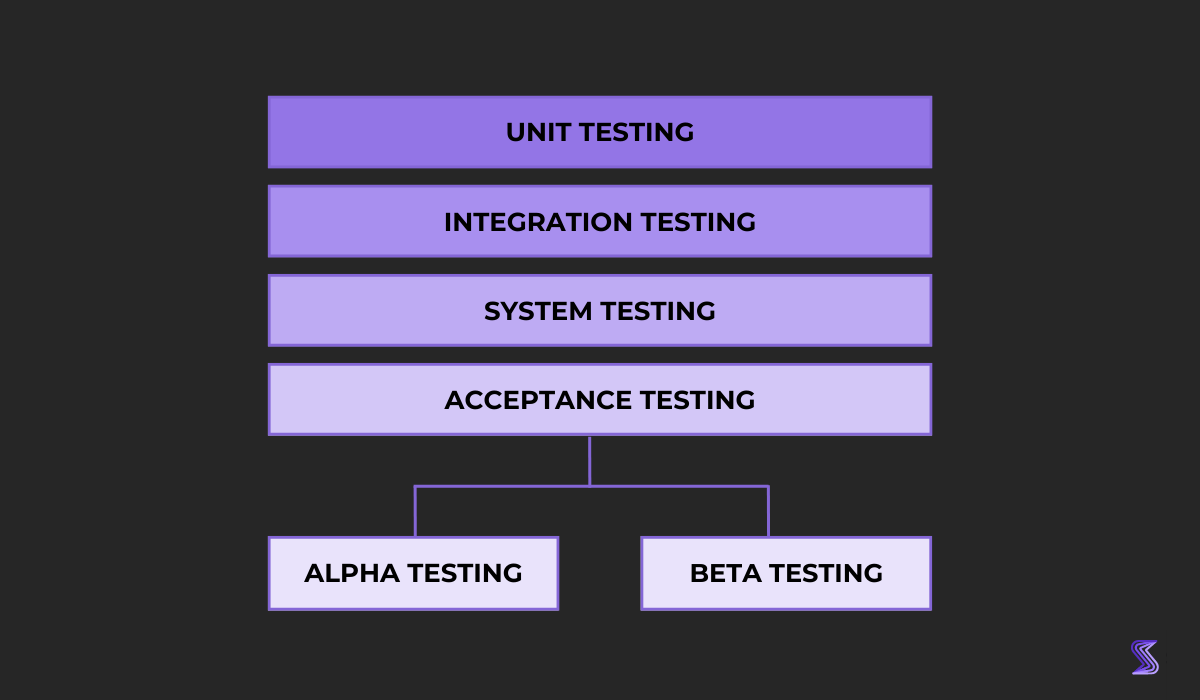
This means that alpha testing occurs toward the end of the software development process, when the prototype is established, and the focus shifts to how it performs in the hands of the users.
In fact, it’s usually the first time that a product will be put in front of real users.
Upon completion of both alpha and beta acceptance testing, the software will be launched to the market.
From this perspective, it’s evident that alpha testing is critically important.
Any unintentional introduction of bugs or other defects into the production environment could potentially lead to disgruntled end-users, consequently tainting the software’s reputation and drawing negative reviews.
And alpha testing, combined with beta testing, is a great way to avoid this.
Who is involved in alpha testing
The alpha testing will primarily be conducted by the development and the quality assurance team, with the project manager potentially joining forces to ensure seamless coordination among all stakeholders involved.
Essentially, the in-house developers will take on the vanguard role in this process, inspecting the software, either manually or through debugging software, to detect any glitches, bugs, crashes, or other defects that may have eluded prior testing efforts.
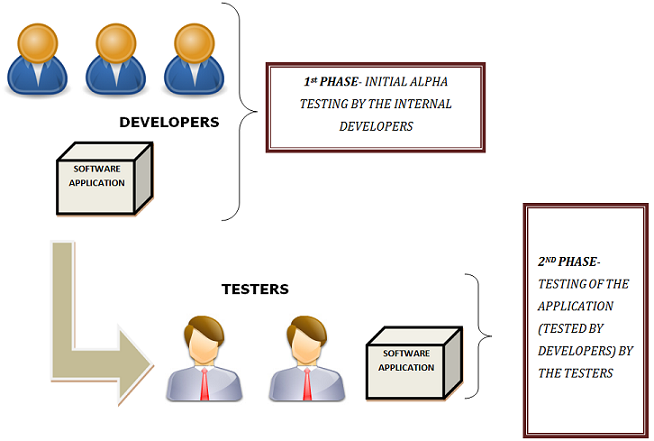
Following this, QA specialists―also company employees―will emerge onto the scene and start taking their part in alpha testing.
Their testing approach will ensure that the product is examined from every possible angle so that everything is in proper order.
They’ll also test the software in diverse settings, such as on different operating systems and browsers, to guarantee its seamless performance across all configurations.
Through this process, QA experts will determine whether the product is ripe for beta testing or if additional development is necessary.
Furthermore, testers can also be drawn from other departments of the company, including the customer support team, to ensure that as many eyes as possible go over the product.
They can be assigned different tasks to make sure that all use cases are covered, thereby speeding up the entire process.
All in all, alpha testing is a complex process that requires the collaboration of many different stakeholders.
A solid team of developers, QA specialists, and other internal testers that can effectively execute each step of the process is important for the success of an alpha test.

What are the stages of alpha testing
Drawing from the previous section, we can divide alpha testing into two distinct stages: software development testing and quality assurance testing.
The first stage, namely the development testing stage, involves developers using their technical expertise to test the product with white-box methods.
This means that they delve into the intricacies of the code by deploying the following techniques:
- Statement coverage—developers will inspect the source code and check if each statement is executed at least once
- Branch coverage—involves checking if each branch of a statement is exercised by tests
- Decision coverage—developers will verify that all possible branches from each decision point are executed at least once
- Data flow testing—inspects the data flow with respect to the variables used in the code
- Control flow testing—determines the execution order of statements through a control structure.
As you can see, during the alpha testing, the developers thoroughly inspect the internal structure to ensure there are no defects or other issues left in the code.
Following that, the quality assurance testing stage begins. There, a team of QA specialists and other internal testers take over.
Although white box testing can also be employed in this stage, the focus is more frequently on black box testing, due to the sometimes limited technical skills of those in the tester role.
Therefore, this stage will focus on functional and non-functional testing and will include:
- Decision table testing —involves the use of decision tables to test how the system responds to various input combinations
- All-pair testing—encompasses the testing of all possible combinations of each pair of input values
- Cause-effect testing—involves the creation of a cause-effect graph to determine the cause and effect of each input value
- State transition—considers states, events that trigger a state transition, and actions that occur as a result of such events
- Use case—requires testing the use of the product by a user
The second stage of alpha testing is also very thorough.
Although it’s less time-intensive than the first, it still requires significant effort to test all possible inputs and ensure that everything works properly.
Therefore, by combining these two stages, alpha testing becomes a highly valuable testing method that should be used frequently before the product goes into beta testing.
How is alpha testing performed
Like all endeavors, for alpha testing to yield the best results, it needs the implementation of the most efficient processes.
We’ll outline some essential steps for conducting successful alpha testing and highlight key aspects of the process.
A well-designed alpha test should begin with a review of the product’s requirements.
By gaining an understanding of what is expected from the finished product, the team can then develop a set of test cases that will provide sufficient coverage across all areas.
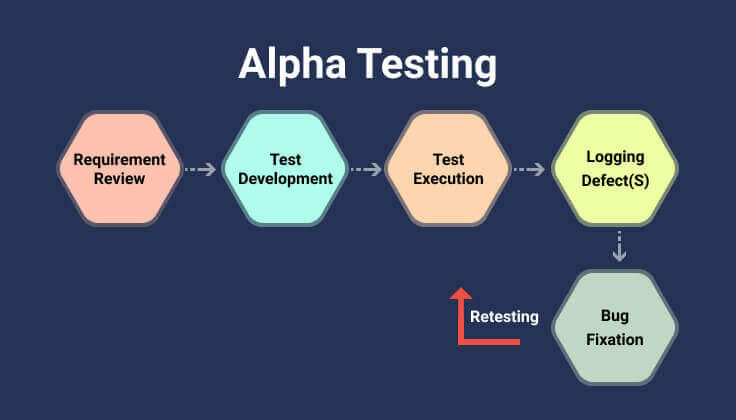
Once the test plan and test cases have been created, the team can initiate alpha testing itself, searching for any faults, defects, and other anomalies within the software.
In the next step, when testers encounter a bug, they should report it in the issue tracking tool used by the team, ensuring visibility of the bug report to all involved parties.

Capture, Annotate & Share in Seconds with our Free Chrome Extension!
Here, it would be a good idea to use tools that will automate and expedite the whole process.
For instance, numerous bug and crash reporting tools are available in the market that you can utilize to streamline this task.
Our own tool, Shake, is one such solution, intended for iOS and Android mobile apps.

When testers discover a bug in the application, the simple gesture of shaking their mobile device will trigger the tool, which will then automatically generate a bug report encompassing over 70 crucial pieces of information.
In fact, Shake’s impressive features collect information such as:
- Device type
- iOS/Android version
- Network connectivity
- CPU and memory usage
- History of console logs
- Battery and storage status
- Screenshots and screen recordings
This information can provide the development team with useful insights, enabling them to resolve bugs more efficiently.
Moreover, Shake’s seamless integration with issue-tracking software such as, for example, Jira ensures that these reports arrive directly on the dashboard of developers and testers.
This way, there is no bottleneck in the team’s collaborations as the bug reporting process is neatly organized and well-structured.
With the bugs identified, the development team can jump right into resolving them.
When developers confirm that the issues have been resolved, the testing team performs another round of testing, continuing the cycle until the product is issue-free.
Although this process may sound straightforward, it actually requires a substantial amount of coordination between everyone involved.
Therefore, it’s pivotal to keep these steps in mind when planning the alpha testing of your product.
Conclusion
As you can see, alpha testing is a vital aspect of software development.
It’s performed at the end of the software development life cycle and, as such, it gives developers an opportunity to uncover major issues or last-minute bugs that might have been missed during other rounds.
It also represents a final check on whether the requirements have been properly implemented before continuing to beta testing.
Hopefully, this article has shed some light on the topic and will help you in your own alpha testing efforts.





